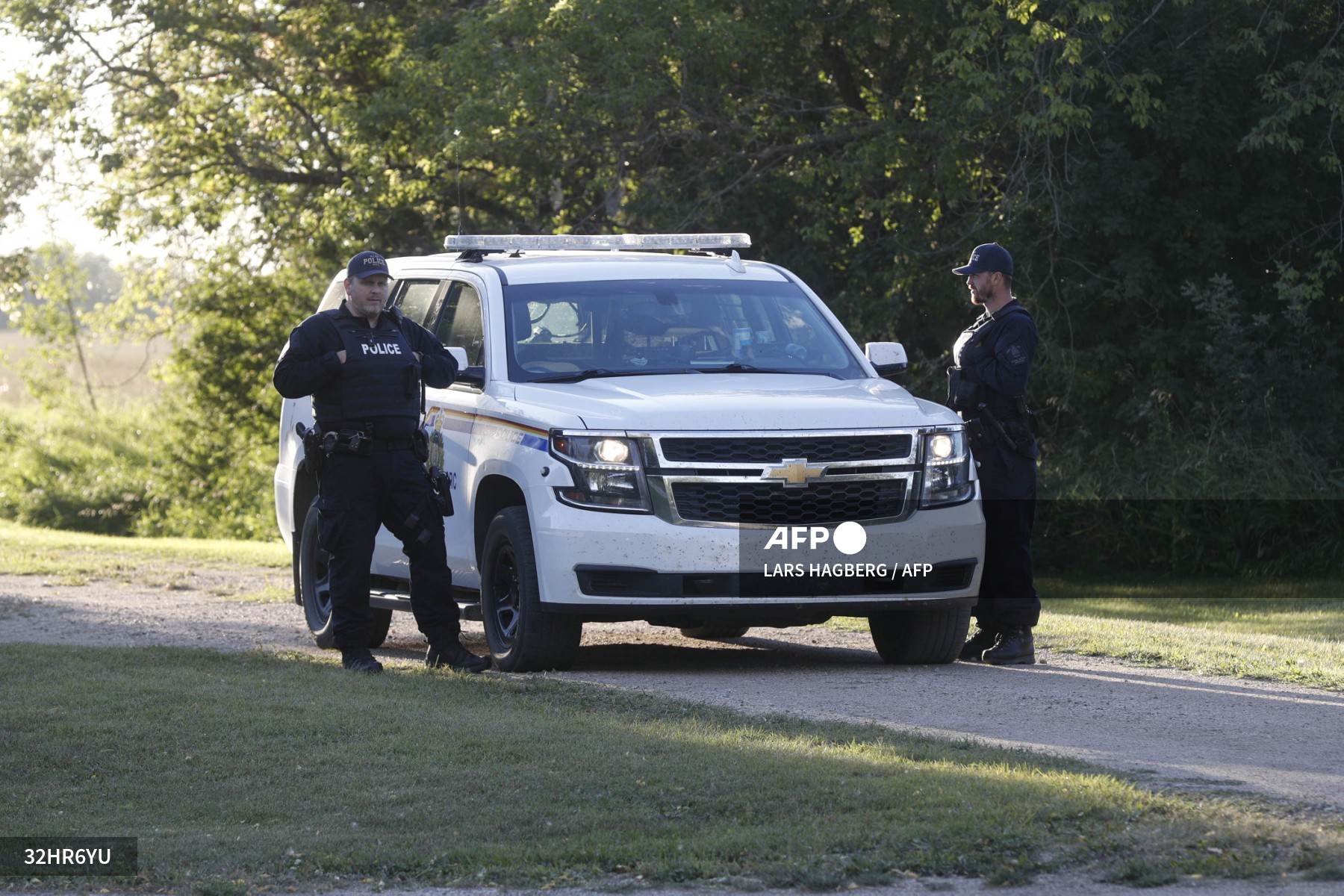
A remote Indigenous community in Western Canada left reeling by a deadly stabbing spree was ordered to lock down Tuesday as police swarmed the area searching for a suspect believed to be hiding there.
The attack in the James Smith Cree Nation Indigenous community and the town of Weldon on Sunday left 10 dead and 18 wounded.
A massive manhunt for two brothers across the vast Prairies region ensued, focusing at one point on Regina, Saskatchewan province’s capital 300 kilometers (185 miles) to the south.
It suddenly turned back to this Indigenous community on Tuesday after police released an emergency message warning that investigators had “received reports of a possible sighting” of suspect Myles Sanderson, 30.
Police in heavily armoured vehicles surged into the community, while calling on area residents to “seek immediate shelter/shelter in place.” A police helicopter flew overhead into the Indigenous area.
Late Monday federal police assistant commissioner Rhonda Blackmore announced they had found the mutilated body of the second suspect, 31-year-old Damien Sanderson, in a grassy area near a house that was being examined in the James Smith Cree Nation.
The younger Sanderson – who is also wanted for breaching parole in May after serving part of a sentence for assault and robbery – is suspected of having killed his brother, she said.
“He may be injured and seek medical attention,” Blackmore added.
A motive is not yet known for the rampage. But Myles Sanderson has a history of explosive violence that led to nearly 60 past criminal convictions.
In the James Smith Cree Nation and nearby Weldon, residents have described overwhelming grief and fear.
“It’s just devastating,” Weldon resident Ruby Works told AFP. “Our lives will never be the same.”
The former Olympian described an eerie tension settling across the region.
“The town is too quiet…. People are scared to come out of their homes,” she said. “Usually you see kids playing outside. Now you don’t see any.”
Before the lockdown, she said residents of the nearby Indigenous community had also been “locking themselves in.”
People are pressed “against the glass looking out the window. They are scared (that) he might come back and do it again,” Works added.
“I won’t sleep until they catch him.”
Prime Minister Justin Trudeau has called the attacks shocking and heartbreaking, while lamenting that “tragedies like these have become all too commonplace.”
Since 2017, Canada has witnessed a gunman masquerading as a policeman kill 22 people in Nova Scotia, another murder six worshippers at a Quebec City mosque, and a driver of a van kill 11 pedestrians in Toronto.
In a briefing on Tuesday, White House press secretary Karine Jean-Pierre condemned the “senseless and devastating” killings.
Authorities have not yet released the names of the victims, but a handful have been identified on social media, including a veteran, an addictions counsellor, a mother of two who worked as a security guard at a local casino, and an elderly widower.
Works said she fell to the ground “and lost my breath for a minute” when she learned that her 77-year-old friend Wes Petterson was among those killed, describing him as a kind, gentle soul.
Ivor Burns told local broadcasters his sister Gloria Burns, 62, was found “lying in her driveway with her friend and a young boy.” “They were massacred,” he said.
Her son Dillon posted on social media that his mother died “protecting a young man while he was being attacked,” adding that “she would’ve done the same for any of us… (even) for the man who has taken her life.”
Several residents and Indigenous leaders suggested rampant drug and alcohol abuse has been a factor in a trend of violent incidents in the area.
Police believe some of the victims were targeted and others were attacked randomly.
Eighteen remain in hospital, including four in critical condition, according to officials.
AFP





